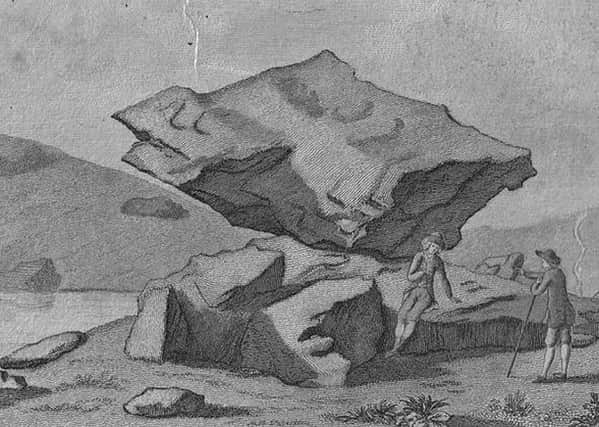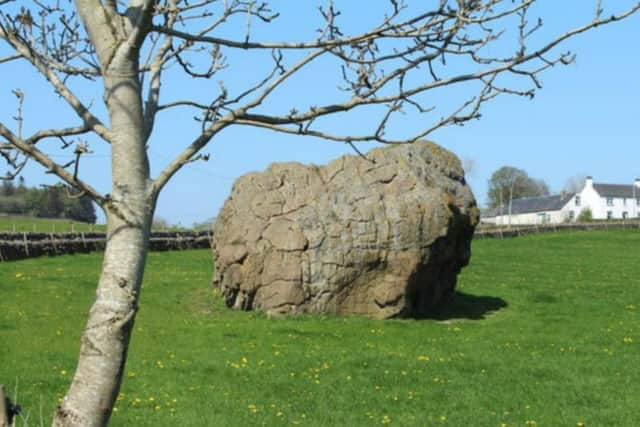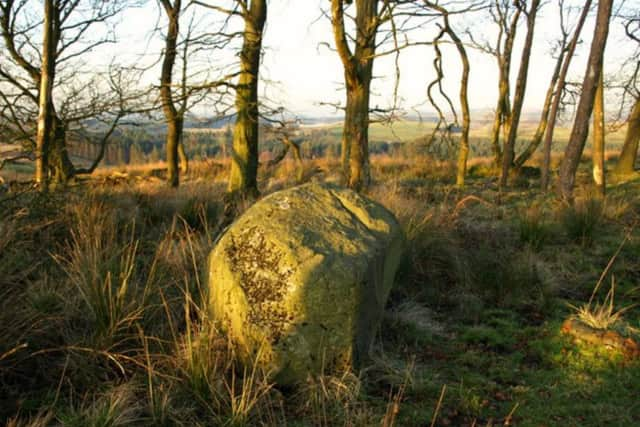Scotland's mysterious rocking stones


Scotland’s mysterious rocking stones have been the focus of speculation for hundreds of years.
While some believe the precarious structures were formed by drifting glaciers and erosion, others have long claimed they were central to the religious ceremonies of the Druids.


Advertisement
Hide AdAdvertisement
Hide AdRoutinely marked on old maps, they became something of a tourist attraction in the late 18th and 19th Century amid a belief that some of the structures were indeed ancient megaliths.
Similar stones around the world had been both venerated and held sacred.
An article in an 1824 edition of The Spiritual Magazine said: “The stones have excited the curiosity of antiquaries, though their uses have been little understood. They are everywhere to be found where the Druidical system once prevailed.


It added: “We have long been convinced that the rocking stones...played a conspicuous part in he religious ceremonies of the druids.”
Today, some of the stones - which usually weight several tonnes - have been knocked to the ground and rendered still by those curiously testing their qualities.
Others have been deliberately destroyed by hostile forces and most simply don’t rock any more.
The Clochoderick Stone near Kilbarchan in Renfrewshire has been described as a possible Druid judgement stone where the accused would be placed upon with the motion of the stone then determining a verdict.


Advertisement
Hide AdAdvertisement
Hide AdMeausuring 12ft high and 17ft across, it is also claimed to mark the burial place of, Rhydderch Hael, a 7th Century King.
Another stone rests in the parish of Kirkmichael in Perthshire, just west of the main A93 road at the Craigton Corner, close to an old settlement of hut circles.
Although it no longer rocks, there are detailed accounts of how the rhombus-shaped stone, which measured 7ft across at its longest point, moved under pressure.
Estimated to weigh around three tonnes, it could move around a foot up and down when pressed on its extreme corners.


Once the pressure has been removed, the stone would continue to rock for between 26 and 28 times.
At Rhinn of Kells in Galloway, the Logan Stone weighed between eight and 10 tonnes.
“It is so nicely poised, that it can be set with the pressure of a finger,” according to once account.
Advertisement
Hide AdAdvertisement
Hide AdAt Cuff Hill near Beith in Ayrshire, the rocking stone was knocked from its fulcrum and now sits solid on the ground. It lies close to several druid’s graves in a neolithic chambered cairn.
Ayrshire also offers up the Lugar stone at the Bellow Burn near Auchinleck. Found in a copse of hazel trees, the stone is no longer able to rock and is wedged on a bed of smaller rocks.
And at Balvaird in Perthshire, the rocking stone is believed to have been destroyed in the mid 17th Century.
Parish records from 1853 note: “Its vibratory power according to the tradition of the country was destroyed by a party of Cromwell’s Soldiers or by an incursion of the Highlanders, at present it cannot be moved without great power.”
The stone still lies where it fell.
